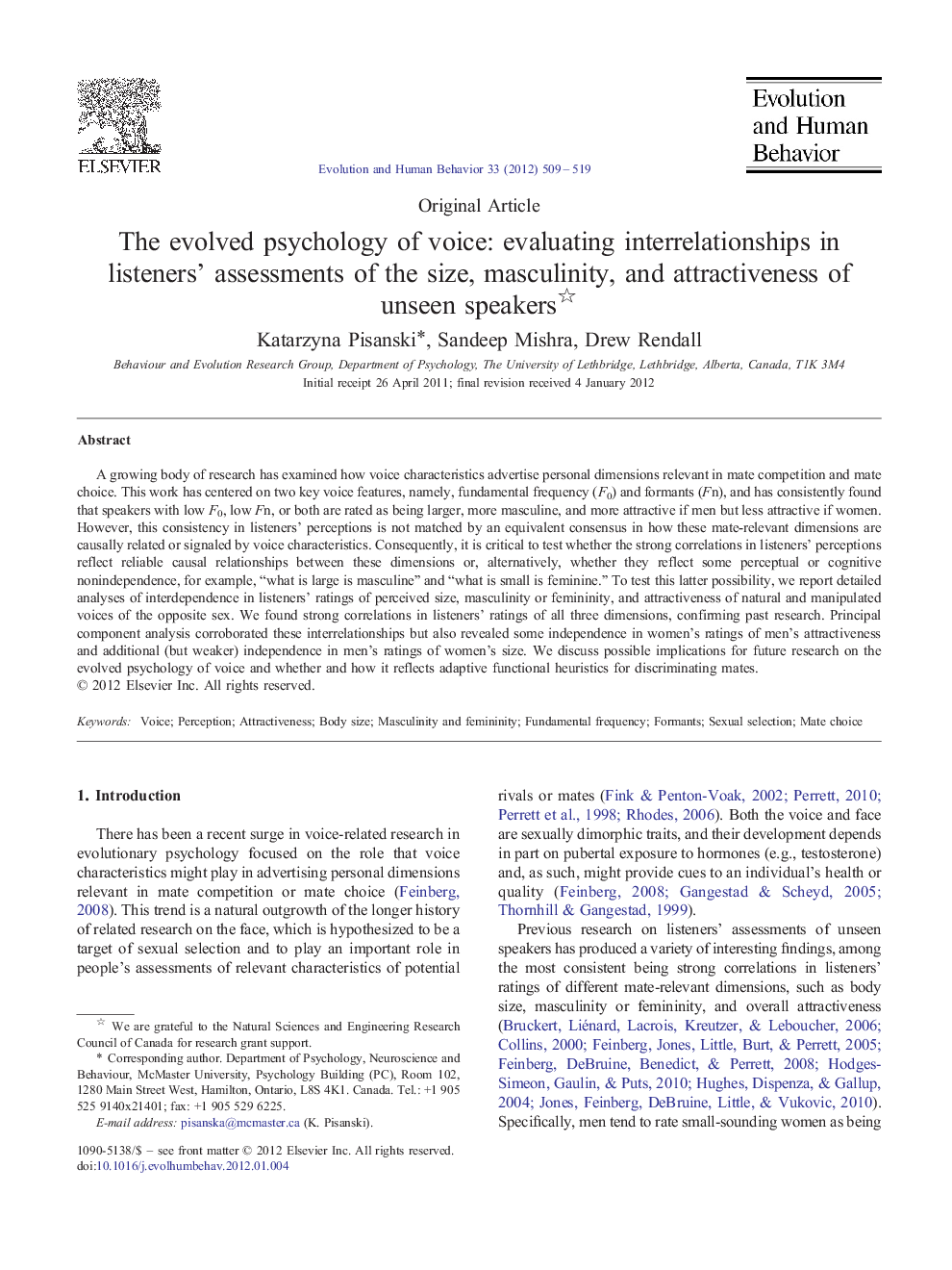| Article ID | Journal | Published Year | Pages | File Type |
|---|---|---|---|---|
| 943207 | Evolution and Human Behavior | 2012 | 11 Pages |
A growing body of research has examined how voice characteristics advertise personal dimensions relevant in mate competition and mate choice. This work has centered on two key voice features, namely, fundamental frequency (F0) and formants (Fn), and has consistently found that speakers with low F0, low Fn, or both are rated as being larger, more masculine, and more attractive if men but less attractive if women. However, this consistency in listeners' perceptions is not matched by an equivalent consensus in how these mate-relevant dimensions are causally related or signaled by voice characteristics. Consequently, it is critical to test whether the strong correlations in listeners' perceptions reflect reliable causal relationships between these dimensions or, alternatively, whether they reflect some perceptual or cognitive nonindependence, for example, “what is large is masculine” and “what is small is feminine.” To test this latter possibility, we report detailed analyses of interdependence in listeners' ratings of perceived size, masculinity or femininity, and attractiveness of natural and manipulated voices of the opposite sex. We found strong correlations in listeners' ratings of all three dimensions, confirming past research. Principal component analysis corroborated these interrelationships but also revealed some independence in women's ratings of men's attractiveness and additional (but weaker) independence in men's ratings of women's size. We discuss possible implications for future research on the evolved psychology of voice and whether and how it reflects adaptive functional heuristics for discriminating mates.
